Core i7 Dream System
We're calling the Core i7 High-End system our "Dream" system - and for many in the current economic times, that's exactly what this is: a dream. Components were selected because they represent the highest end of the performance curve with some tilt toward value. That does not mean the components of the Core i7 Dream System are the best value or the best bang for the buck, as in most cases you pay a lot at the top for a fairly small increase in performance. However, in most cases the component selected is a top performer.
This is not no-holds-barred, as we could easily have chosen a RAID 5 storage setup with 1TB to 2TB enterprise drives and an SSD RAID boot array. We stopped short of choosing that option, but some will be interested in going that direction. As the dollars added up quickly the final decision was to limit the high-end to somewhere around $5000. More can be spent, and if you're looking at the deficiencies in this $5000 Core i7 system you certainly know where you would like to spend the extra dollars. In the end the i7 Dream is a heck of a system, as we hope you will agree.
| Intel i7 Dream System | ||
| Hardware | Component | Price |
| Processor | Intel Core i7 965 Socket 1366 (3.2GHz Quad-core, 4x256KB L2, 8MB L3 Cache) |
$1010 |
| Cooling | Vigor Monsoon III LT for Socket 1366 | $60 |
| Video | EVGA 017-P3-1291-AR GeForce GTX 295 2.0 x16 | $505 |
| Motherboard | ASUS P6T6 WS Revolution X58 | $370 |
| Memory | Mushkin 6GB (3x2GB) DDR3-1600 (PC3-12800) 7-8-7-20 Kit 998679 | $205 |
| SSD | Intel X-25M SSDSA2MH160G1C5 160GB | ($729) |
| Hard Drive | Western Digital Caviar Black WD1001FALS 1TB 7200 RPM 32MB Cache SATA 3.0Gb/s | $120 |
| Optical Drive | LG 6X BD-R 2X BD-RE 16X DVD+R 6X Blu-ray SATA Blu-ray Burner GGW-H20LK | $190 |
| Optical Drive | LG BD/HD DVD / 16x DVD+/- RW GGC-H20LK | $110 |
| Audio | ASUS Xonar DX 7.1 | $90 |
| Case | Silversone FT01-BW Aluminum ATX Mid-Tower Unibody | $230 |
| Power Supply | CORSAIR CMPSU-1000HX 1000W SLI Ready CrossFire Ready 80 PLUS Certified Modular | $210 |
| Display | LG W3000H-Bn 30" 2560x1600 5ms S-IPS LCD | $1100 |
| Speakers | Logitech Z-5500 505W 5.1 Speakers | $303 |
| Keyboard | Logitech G15 | $90 |
| Mouse | Logitech G5 7 Buttons/1 Wheel USB Laser Mouse | $50 |
| Operating System | Microsoft Vista Ultimate OEM | $180 |
| Bottom Line | $4823 ($5552) |
|
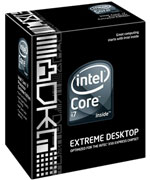 |
The i7 965 is the top of the Intel Core i7 line. It runs at the highest 3.2GHz available in a stock i7 and it is the only Core i7 with an unlocked multiplier. This makes the Core i7 965 an extremely flexible CPU for overclocking. In fairness, top-of-the-line processors rarely give the highest percentage overclocks. However, they perform the best at stock speeds and they are the easiest to overclock should you choose to do that. Components do not need to be pushed as far to reach the higher overclocks, which makes it less likely that peripheral limitations will hold back overall OC performance.
Some will ask why in the world we even think of recommending a $1000 CPU. Our answer would be that this is a dream system and price is not an overriding consideration. We also would be willing to bet that if you were offered a $295 i7 920 or an i7 965 at the same price you would choose the 3.2GHz unlocked 965. If the price is too rich you can always choose the lower priced 920 or 940 in the $295 to $595 price range.
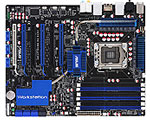 |
The ASUS P6T6 WS Revolution X58 is a workstation board with a very flexible design. It features three x16 PCI-E slots that are truly x16 in operation. That makes the ASUS P6T6 Revolution capable of supporting the fastest triple-SLI setup possible if you are inclined to go in that direction. A dream system should support all the high-end possibilities imaginable and the P6T6 WS will not disappoint. Our motherboard editor, Gary Key, has said he would choose this motherboard for his own personal dream system.
 |
The i7 Dream System needs at least 6GB of triple-channel memory, and there is nothing better on the market right now than the Mushkin 6GB (3x2GB) DDR3-1600 (PC3-12800) 7-8-7-20 kit. The attraction of this Mushkin 6GB package is the aggressive 7-8-7 timings it supports. This memory meets its specs, and it is blazingly fast in a Core i7 system.
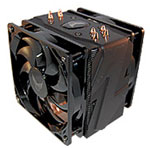 |
Several well-known coolers offer optional adapters for socket 1366, but the cooler choice mated with the ASUS P6T7 WS Revolution is the Vigor Monsoon III LT. Naturally, the Monsoon III LT cools better than the Intel stock cooler and it is a good match to the capabilities of the i7 965 CPU. If you want even better cooling, you will need to go to a large radiator water system or phase-change cooling.
 |
Since a dream system is about best performance, the choice for GPU is the new NVIDIA GTX 295. The hybrid design of the GTX 295 GPUs provides lots of shader horsepower with less RAM and pixel power than the GTX 280. This means the GTX 295 should perform better than two GTX 260 cards in SLI mode, but a bit less than two GTX 280s in SLI. In our game testing the GTX 295 beat the 4870X2 in some games and lost to it in others. Overall, it is certainly the equal of the 4870X2 in performance at about the same $500 price. NVIDIA drivers work very well on the i7 and the GTX 295 will be a fast and reliable performer in the i7 Dream System. A second GTX 295 would even provide quad-SLI if you are looking for bragging rights.
 |
The Silverstone case was a top choice in the Holiday Case and Power Supply Guide. Silverstone's tower uses two large fans in a full aluminum case to create "positive air-pressure". The technique pumps more air inside of the case than fans are exhausting. The positive pressure then pushes the hot air out of every hole in the case. When we changed the direction of the fan from stock, we immediately saw higher temperatures and poorer cooling results, so you might consider a similar approach on your own system. The stock positive pressure design really did cool better in our testing. You can read our full review of the FT01 for more details. The overall quality of the Silverstone FT01 chassis is unmatched today, and those with enough money will not be disappointed. It is not cheap with a price of $210 to $250 without a power supply, but the FT01 remains an exceptional value in a high-end case. The FT01 is a mid-tower case as the best is not always the largest. If you want a larger case than the Silverstone FT01 the Silverstone Full Tower TJ07 series provides the same "positive pressure" design in a full tower case at around $370.
 |
The Corsair 1000W power supply is our choice to power the Core i7 Dream System. The largest power supply that can be driven by a US plug is around 1200W, though EU readers could select even larger power supplies with the higher voltages in use in Europe. However, the Corsair CMPSU-1000HX should handle anything you can install in the Core i7 Dream System. The PSU is SLI Ready, CrossFire Ready, and 80 Plus Certified. This is also a modular design, so it is easy to update power connectors whenever the GPU industry or Intel introduce a new and unique power connector. Corsair has also been very good at keeping up with modular cords when new connectors are introduced.
 |
The ASUS Xonar DX 7.1 is one of the top-performing audio cards on the market today. It is a great upgrade to the onboard sound if you want better sound quality. Game compatibility is excellent, but most game creators assume everyone has a Creative Labs sound card. If your main reason for having a powerful i7 computer is gaming, you may prefer the Creative 7.1 Sound Blaster X-Fi Titanium at the same $90 price. In our opinion, the sound quality is better on the ASUS sound card, but compatibility will never be a question with a Creative Labs sound card.
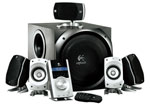 |
In a dream system, one speaker option is a top-of-the-line powered speaker system. That is why speakers have been upgraded to the Logitech Z-5500 550W 5.1 surround sound speakers. At $303 this is certainly not a low-priced option, but it is actually quite cheap compared to option #2, which is regular audio components powering normal audio system speakers. Everyone who has purchased the Z-5500 seems very pleased with the performance, so this was an easy recommendation. That said, some AT Editors have patched their computers into their high-end audio systems, but audio components are a topic for another guide. The Z-5500 delivers great performance for the price and will not likely disappoint you in your dream Core i7 build.
You may need to reread our Holiday 2008 Display Guide to fully appreciate our monitor selection for the Core i7 Dream System. You definitely need a 30" monitor with 2560x1600 resolution to fully utilize the NVIDIA GTX 295 GPU. Fortunately 30" monitors have dropped in price and you can now buy a 30" display for around $1000. On the surface that seems like a good thing, but things are not always what they appear.
The bad thing about the price drop in 30" monitors is that most of the choices have been reworked and now use a TFT display panel. That is OK, but the IPS panel that used to be common in the 30" display is a much better panel. Color fidelity is better and IPS looks much better - especially for photo editing and graphics creation where color accuracy is most important.
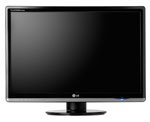 |
Fortunately LG still makes an S-IPS 30" display for just a little more than the typical $1000 TFT 30" display, and the Core i7 Dream System features the 30" LG W3000H-Bn 30" 5ms with the S-IPS Panel at $1100. We don't have the LG IPS panel in house, but we have seen the difference an IPS panel makes in other monitor sizes. Those in the know also report the picture quality of the LG W3000H-Bn is truly stunning, and a fitting match to the Core i7 Dream System.
The dream system deserves an SSD as a boot/game drive but we are in the process of testing the more recent drives to see if the new SATA II SSDs finally correct the corruption and pause issues seen in past testing. In the meantime, if you need a reliable choice for an SSD today we can recommend the Intel X-25M SSDSA2MH160G1C5 160GB. It is very expensive compared to the most recent SSD introductions, but it does deliver performance as promised. As soon as testing of the current crop of SSD drives is complete we will revisit potential SSD recommendations.
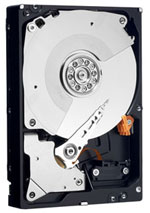 |
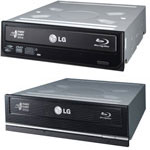 |
The remaining components are similar to the i7 OC choices. The storage hard drive remains 1TB but the Western Digital was chosen for the dream system at a slightly higher price. For optical drives, two Blu-ray drives were chosen for more flexible backup and disc copying. One is the LG Blu-ray reader featured in the Core i7 Entry and the second is the LG Blu-ray writer that was used in the Core i7 OC system. With both a Blu-ray reader and a writer for the 25GB/50GB Blu-ray disks you have a very flexible system for handling Blu-ray, which makes sense in a Dream system.
We also upgraded to Windows Vista Ultimate. Frankly, it adds nothing we need in our dream system that could not be provided by Vista Home Premium, but a dream system deserves Vista Ultimate. Alternately, if you are the self-assured type, use Vista Home Premium and slam your friends who chose Ultimate. Ask them why and then explain why not.
 |
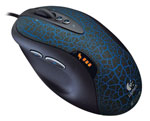 |
The last area to discuss is input devices, where we went with gamer favorites in the Logitech G15 gaming keyboard and the G5 gaming laser mouse. Both are very well regarded devices that fit well with the capabilities and concept of the Core i7 Dream system. If you covet the dream system for graphics and photo editing but not gaming, you can easily drop the G15/G5 and select precision input devices that better fit your needs.










106 Comments
View All Comments
Wesley Fink - Thursday, February 5, 2009 - link
The $1000 to $2000 Guide was published 1/12/2009. At that point the best ATI drivers with the Core i7 were a special beta set of 8.12 drivers. On 1/29/2009 ATI released the 9.1 drivers, which are much better with the ATI cards on the Core i7 than earlier drivers.Our issues before were the ATI drivers and not the cards. We explained in today's guide that the ATI drivers were headed in the right direction and we could no longer ignore the better value of the 4870 1GB.
cajones - Thursday, February 5, 2009 - link
So three weeks ago in the $1000-$2000 buyers guide, it was stated to stay away from the ATI cards on X58 systems due to problems. So last night I bought a system with a Nvidia GTX 260 (55nm). Now I see the board of choice with X58 in this guide is the 4870! What changed?Gary Key - Thursday, February 5, 2009 - link
I run the GTX260 216 in my personal systems even though I have a couple of HD 4870s laying on the floor right now that I purchased for our Phenom II comparison articles. If it were not for the recent price drop and improvement in drivers, I would not have even considered the HD 4870 1GB as an option. However, all of us on the staff agree it must be seriously considered now. At the same time, we all agree the GTX260 216 is still a great card, just the cost/benefits ratio has changed significantly this last week. The short story is that you cannot go wrong with either card. :)JarredWalton - Thursday, February 5, 2009 - link
Newer drivers have helped, but honestly you don't have to feel bad about the GTX 260 - it's really something of a toss-up. I have a 4870X2, but honestly I wish I had waiting for the GTX 295 instead. CrossFire still doesn't live up to its potential in games more often than not, and without profiles you're stuck waiting for hacks or new drivers - usually 2-3 months after a game is released, unless it's a major title like Far Cry 2. Funny enough, Fallout 3 seems a major title and it still isn't properly CF enabled.shatteredstone - Thursday, February 5, 2009 - link
You mention that the ASUS P6T6 Revolution (btw, there is a typo in the article (P5T6)) would be the optimal board for Triple-SLI. As somebody who is seriously considering going that route in the near future, I will have to disagree.With three two-slot graphics cards, you will be constrained to using onboard-audio -- all 6 slots are used/unusable, and there is no 1-lane PCIe slot to accomodate the audio solution. The Asus II Rampage Extreme supports triple-SLI as well, but actually offers such a slot (it comes with their custom X-Fi, but you can use a Titanium or the recommended card here as well -- although you may have to remove 3-4 fins from one of the passive chipset coolers; if you are going to go with watercooling, this is naturally not a problem).
Furthermore, "fastest triple-SLI setup possible" should be taken with a grain of salt. It is true that the 3 PCIe slots will all be x16, but that does not necessarily make this the fastest possible solution. Two of those three slots will terminate in the NF200, which will combine those 32 lanes to 16 which can actually reach the CPU (and therefore main memory); furthermore, only the communication between the two cards terminating in the nf200 will actually be able to communicate with eachother at x16 bandwidth; connectivity with the third card will still be constrained by the single x16-connection from the NF200 to the X58.
In essence this means that this setup will only really have benefits if your application is constrained by two of the three cards talking to eachother. Available bandwidth to memory remains about the same (assuming you actually utilize the cards in parallel, otherwise you really don't need three of em on there anyway). I would also not be surprised if the NF200 introduces some latency into the whole thing, and I would be thoroughly surprised if you could see the difference in today's GPU-killer games (Crysis, say).
One other nitpick would be the choice of Vista Ultimate OEM instead of Vista Ultimate FPP. Since this is the dream system, it may see a lot of tinkering over the years; I am not 100% current on the US-American license terms for Vista Ultimate, though from what I understand, your OEM version will be tied to that one computer (or whatever Microsoft may deem that to mean), while you can legally transfer the FPP from one computer to another (though you might have to call them to get it activated, anyway).
One other nitpick : in the article, you link to the p6t6 on newegg (as well as one or two other things). I did not look at the link before opening it in the background, so it was quite counterintuitive to find it bringin me to NewEgg instead of a review or content on Anandtech (especially since most of the other components are /not/ linked that way, and there is no indication of this link actually just directing you to a store).
Thanks for the guide; My dream system is close (currently thinking of the rampage ii extreme instead of the p6t6, even though I really couldn't care less about those onboard buttons and LEDs; probably some higher speed memory (if it is at all available; the nice-looking ocz blade 2kmhz/cl7 kits look lovely on paper but probably will never ever reach the retail channel), water cooling for most of this stuff (been meaning to play with that for a while), gtx285 instead of 295 (the memory does it for me), and some as-yet undecided storage decisions.
Gary Key - Thursday, February 5, 2009 - link
If you want to run triple SLI and retain a half slot (without mods), then the Rampage Extreme II is a better choice or the upcoming EVGA Classified. Personally I would never run triple SLI for any reason except trying to get a good 3DMark. Even then you would need LN2 and a hand picked i7 from Intel to have a possibility in being near the top of the Orb. 3 way-SLI is just not worth the hassle and cost, same goes for tri-Crossfire.I suggested this board to Wes since it is now rock solid. I prefer workstation level quality in my main home system and this board offers it. It took a few BIOS releases to get there, but this board does offer the ability to overclock with lower voltage, VTT, and VDimm rates than the other boards we have tested, with the exception of the DFI UT board in the overclocking section.
Yes, the NF200 on-board does not guarantee "the fastest SLI" setup possible, but it does not hurt that much either and you know this board will never have any driver or BIOS incompatibilities with SLI. It is just another assurance that you pay for going this route.
Overall, I think Wes went with this board in the Dream System more for the quality and features of the board than worrying about gaming or pure overclocking performance. If you wanted to save some money, there are other options like the ASUS P6T Deluxe, Gigabyte UD5, or the EVGA X58 SLI for feature rich boards that over a great overclocking experience.
If overclocking is not at the top of your list, the MSI Eclipse X58 has turned into a really balanced board as of late. Down the ladder there is the Asus P6T, DFI DK X58, and MSI Platinum SLI that still offer SLI and very good quality/performance metrics.
Wesley Fink - Thursday, February 5, 2009 - link
Unfortunately spelling and grammar checks do not catch incorrect model numbers. We got it right 3 of the 4 times and the incorrect 4th reference is now corrected.Gary Key is our Motherboard Editor and he very passionate about the P6T6 WS Revolution. I have linked him to your comment.
tretchie - Thursday, February 5, 2009 - link
I don't think the LG GGW-H20LK mentioned in this article can burn 50GB BD-RE discs as claimed by the author. I think it is limited to 25GB BD-RE discs. Can someone in the know comment on this?Wesley Fink - Monday, February 9, 2009 - link
The LG burner supports writing double-layer (50GB) Blu-Ray disks. I have burned a 50GB with the LG in my own system.iregulate - Thursday, February 5, 2009 - link
I can verify that it does burn DL BD-RE discs.